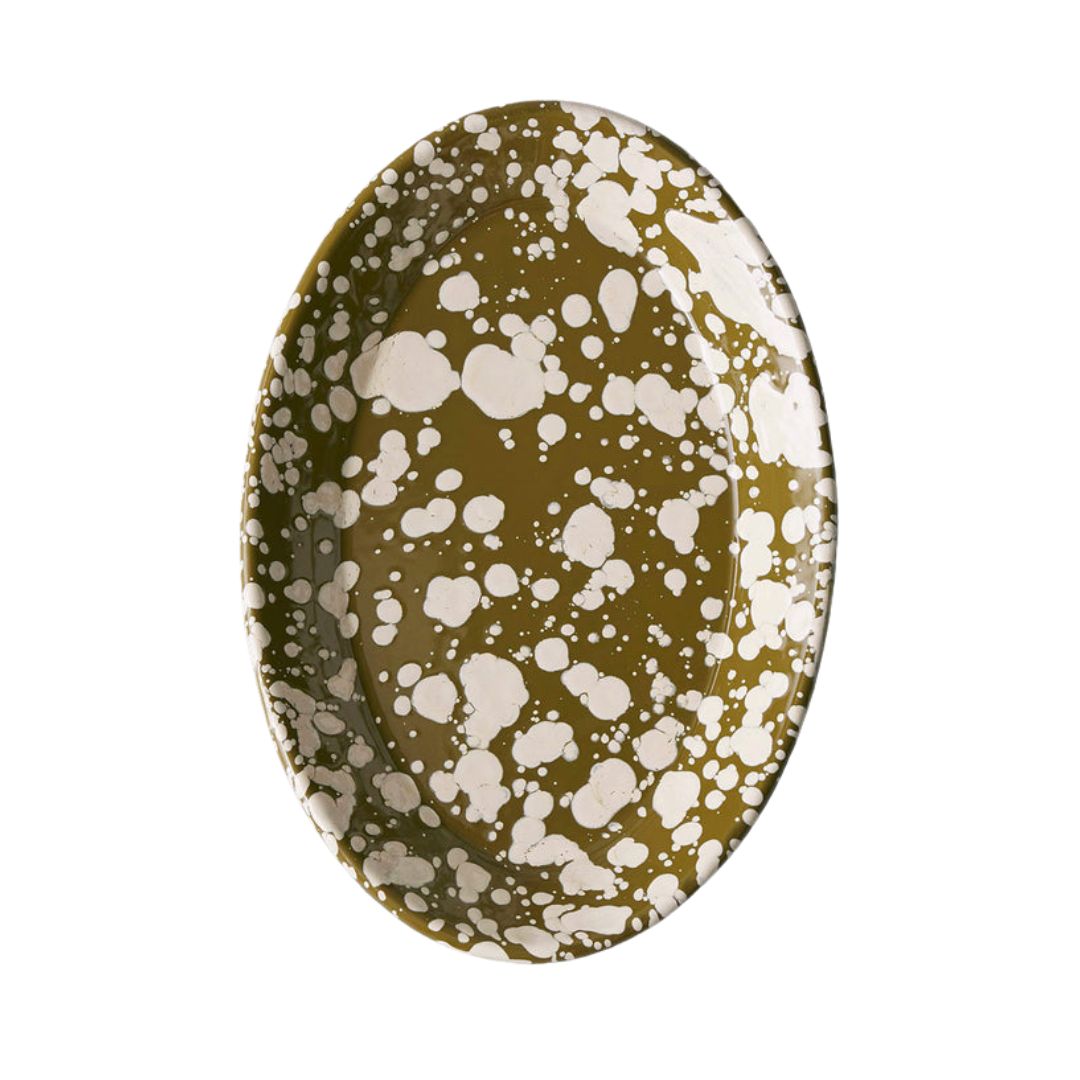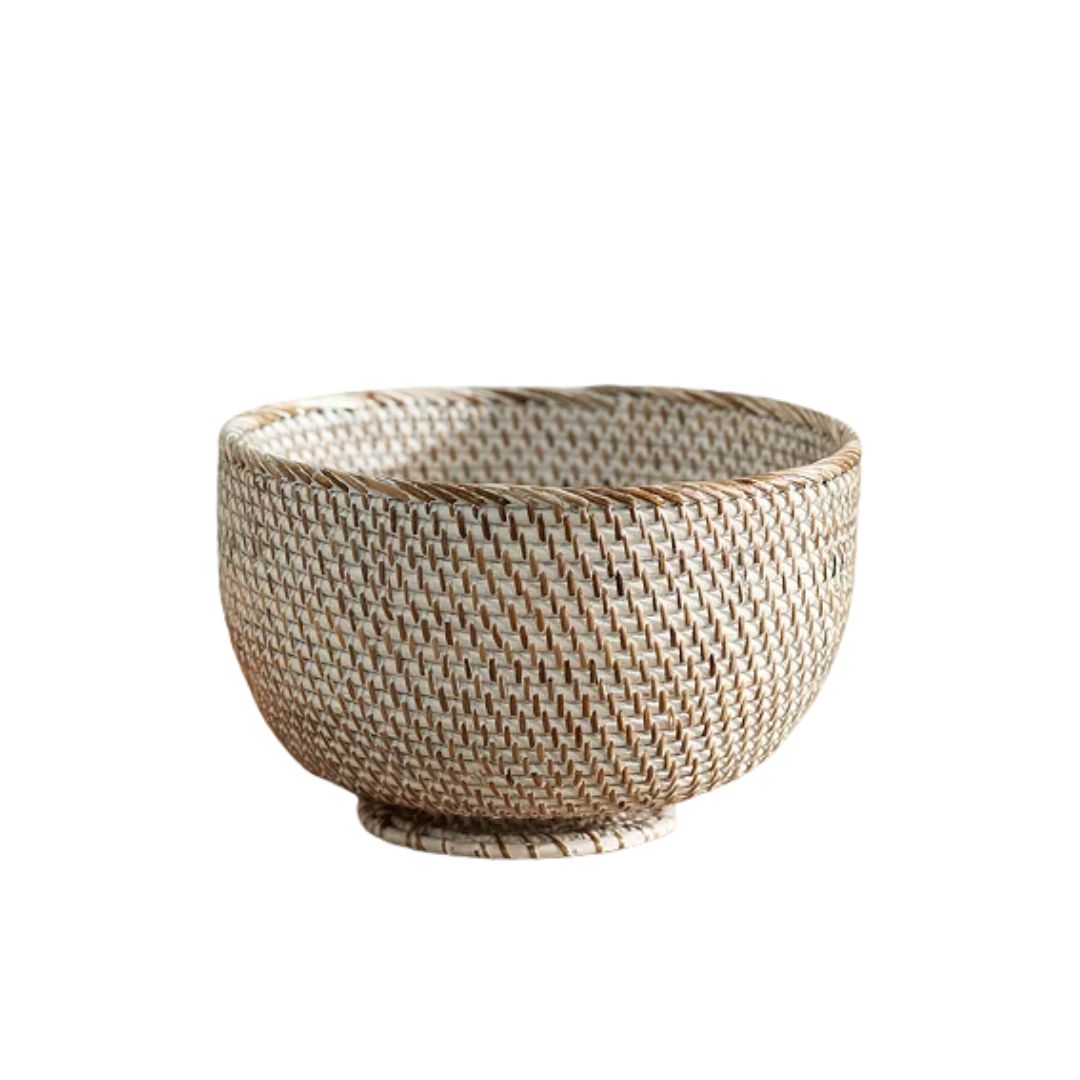10 Outdated Kitchen Island Trends to Avoid in 2025 Remodels — And What Designers Are Doing Instead
Planning a kitchen renovation? Here are a few outdated styles of island that the experts are giving a miss in their schemes right now

It’s a fact that we love our kitchen islands, and we can’t imagine people ever getting sick of such a popular centerpiece.
But that’s not to say that kitchen island ideas are immune to the rise and fall of trends. Like most aspects of the interior design world, today, there are some definite dos and don’ts if you want your kitchen island style to look fresh, innovative, and chic.
So while kitchen islands have staying power, some kitchen island designs can date your space. But which trends now seem a little old-fashioned? And what should we be doing instead?
We asked the design experts to reveal the kitchen island ideas they are giving a swerve — and how they are making their projects timeless (rather than trendy) for a very long time.
1. Overhead Extractors
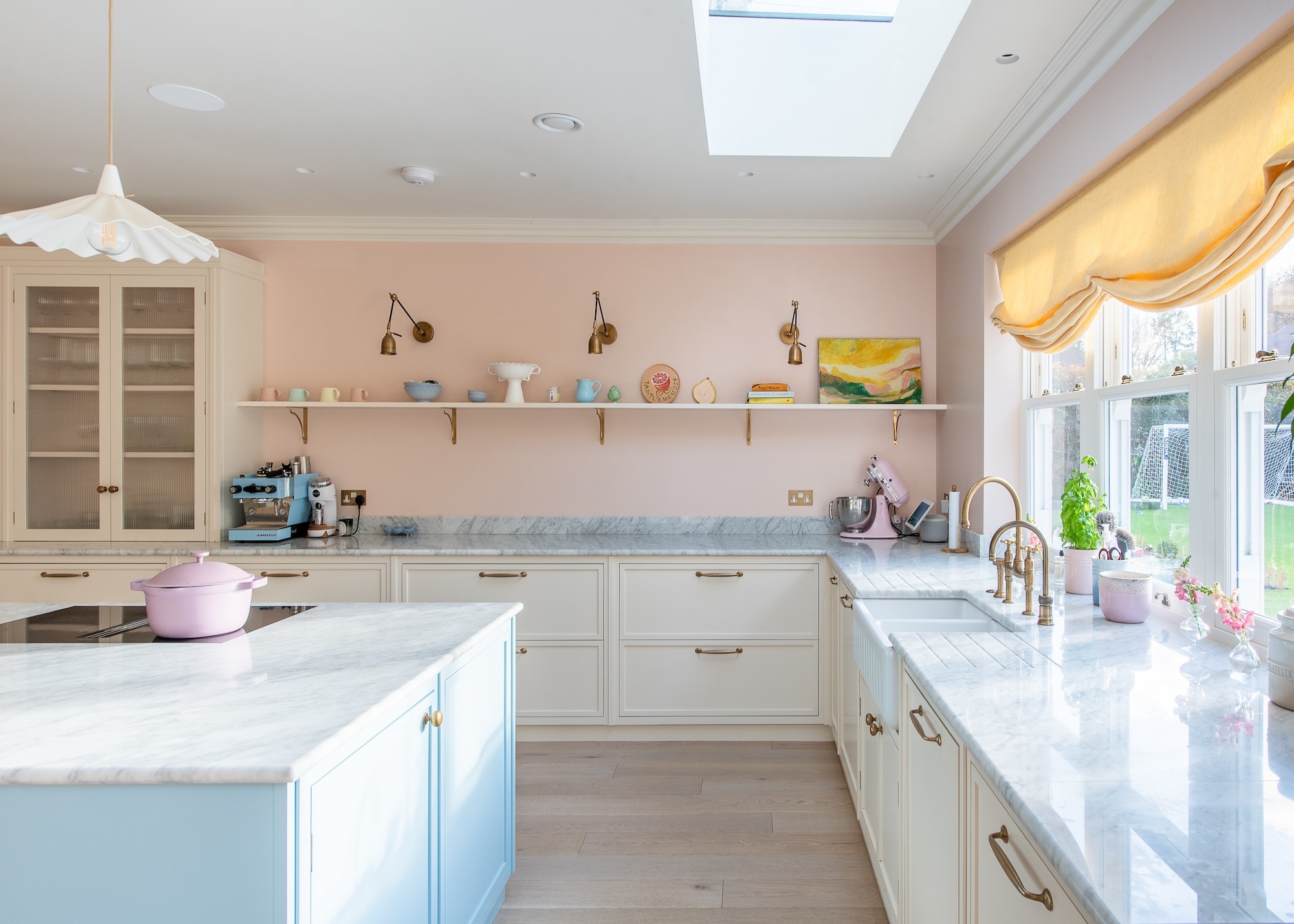
Do Instead: Choose flush-fitting ventilation for your kitchen island.
Good kitchen ventilation is crucial for getting rid of cooking fumes and odours in the kitchen, but bulky, industrial-style extractors can look a little old-hat, especially when they are suspended above the kitchen island.
Instead, go for a flush-fitting vent that sits neatly in the worktop for a slick, streamlined silhouette.
“Bulkheads with ceiling extractors over islands seem to have fallen out of favour,” declares Lizzie Spinks, head of design at Makers Furniture, “especially with the rise in popularity of vented hobs which provide a more streamlined, contemporary look.
The Livingetc newsletters are your inside source for what’s shaping interiors now - and what’s next. Discover trend forecasts, smart style ideas, and curated shopping inspiration that brings design to life. Subscribe today and stay ahead of the curve.
William Durrant, owner and director of Herringbone House, agrees: “Overhead extraction is now redundant. Luckily, technology has come a long way, and recirculating hobs make these unnecessary.”
2. Split-Level Islands
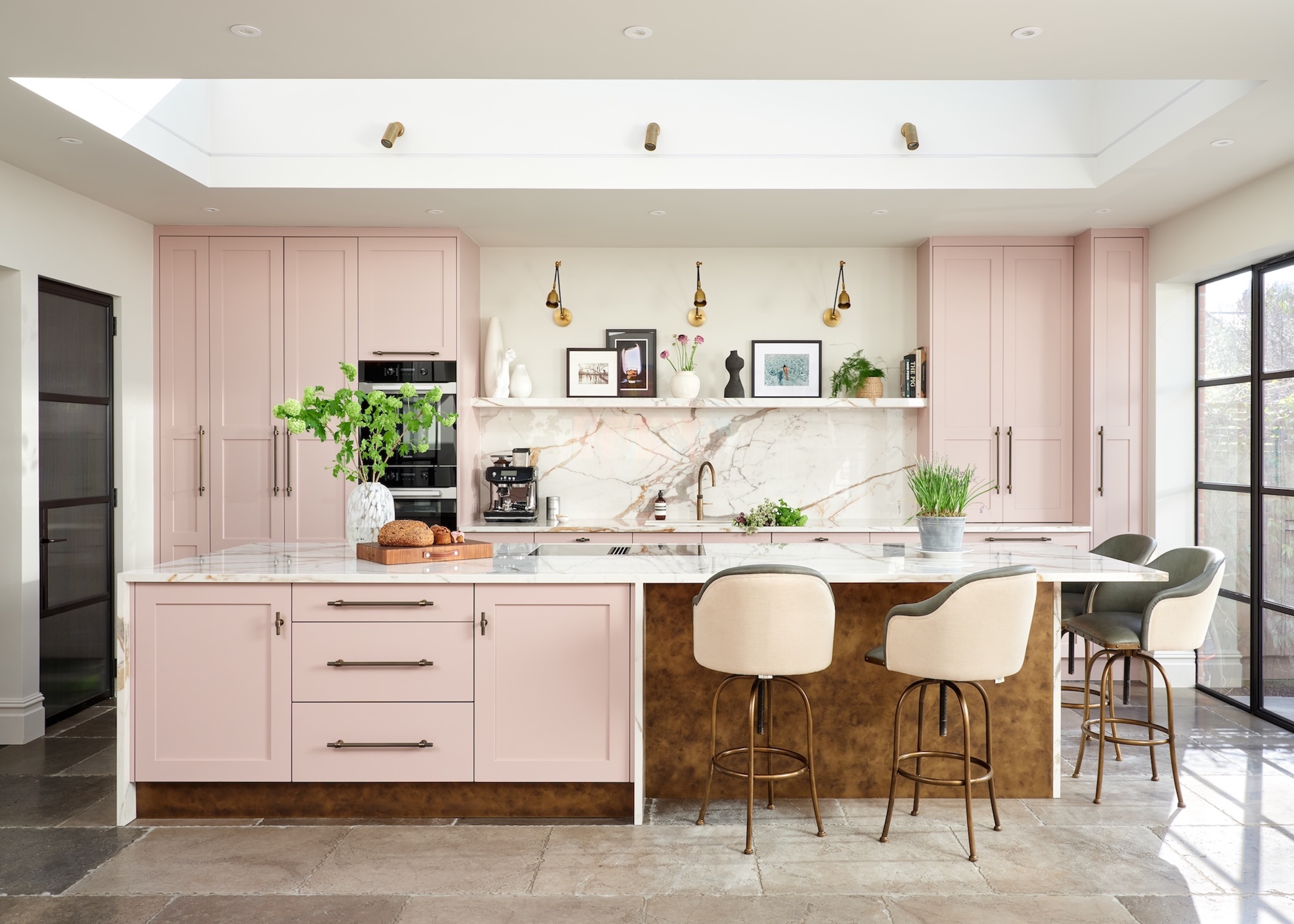
Do Instead: Keep your kitchen island on one level.
The trend for tiered kitchen islands with a higher breakfast bar might’ve once been a modern way to zone the kitchen layout and separate kitchen tasks from dining and entertaining. However, split-level islands now look clunky and dated and break up the flow and clean lines of a contemporary kitchen.
“The multi-level surfaces hinder sightlines and limit the amount of usable prep space you actually have,” says Nathan Kingsbury, creative director of Nathan Kingsbury Design.
The solution is to keep your kitchen island all one level. “It looks cleaner, feels more sociable, and gives you a flexible surface for everything from cooking to working from home,” adds Simon Ribchester, head of design at Beams.

Simon is head of design at Beams, a home renovation company that helps homeowners and contractors made eco-friendly choices reducing carbon emissions and improving energy efficiency
3. The Oversized Monolith

Do Instead: Don’t let your kitchen island dominate the space.
Kitchen islands are pretty timeless, but don’t be tempted to oversize your island, as this can really date your room and dominate the entire kitchen.
“A huge block of cabinetry in the middle of the kitchen used to feel luxurious and elegant,” says Simon Ribchester at Beams. ‘But it can feel heavy, take up too much space, and interrupt flow.”
In its place, the experts champion a more proportionate island that has good storage and work surface space, enhances efficiency and encourages social interaction, but doesn’t overwhelm the room.
Simon is all for a slimmer, more purposeful island with space to move around it easily. “Add elements like open shelving and breakfast bars to break up the block of cabinetry and make the island feel less heavy. Islands on legs can help to reveal more of the floor area to increase the sense of space.”
4. Plain Kitchen Islands
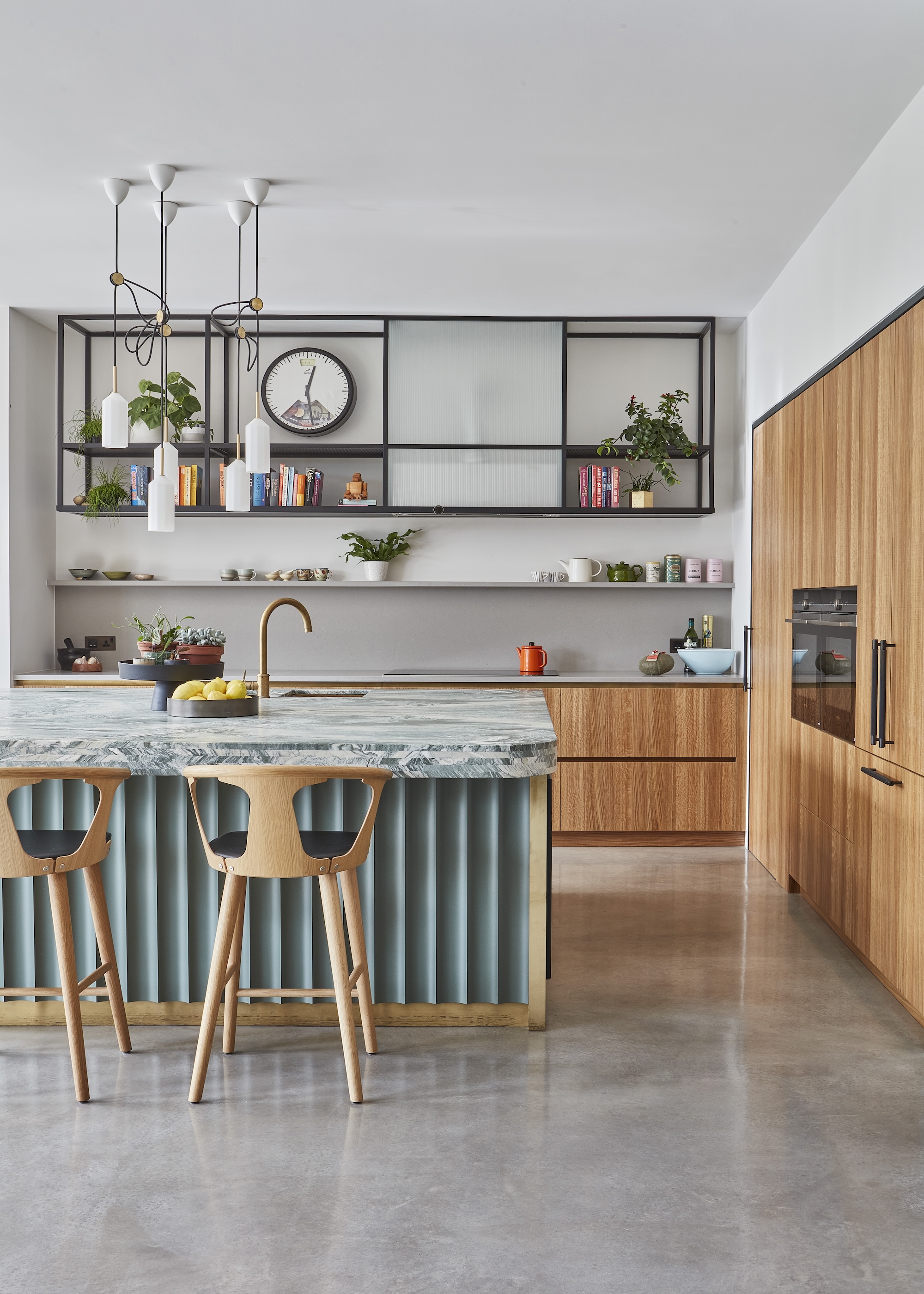
Do Instead: Introduce curves and textures for a statement focal point.
It might be tempting to design your kitchen island purely for function. And while you need to carefully work out what you want your island for (storage, seating, appliances, etc), style should be top of the list too. Function alone is definitely passe for your centrepiece!
That’s why designers are treating the kitchen island as a true statement piece, rather than letting it fade into the background. So it’s time to ditch plain kitchen islands and create a personality-packed piece instead.
“Since the island naturally draws attention and is often one of the most used areas in the kitchen, it deserves thoughtful design that reflects both style and substance,” says Felix Milns of HUX London. “Start by bringing detail to the island through shape and form. Move away from rigid, boxy silhouettes and consider curved edges and more organic shapes to soften the overall look and create a sense of flow.”
Layer in decorative details such as fluted or reeded paneling and consider high-impact surfaces such as richly veined marble that add an artisanal touch.
“Ultimately, the goal is to treat your kitchen island not just as a practical workspace, but as a sculptural centrepiece — one that enhances the overall design narrative of your home while offering function, beauty and a touch of the unexpected,” Felix adds.

Felix runs HUX London which designs bespoke kitchens, cabinetry and furniture for a wide range of discerning private clients and design professionals.
5. Only Choosing High Bar Stools

Do Instead: Consider a cozy dining nook in your kitchen island.
High bar stools lined up along one side of a kitchen island have long been the go-to seating solution — spot on for a casual breakfast perch and practical for quick meals and casual conversation.
But don’t dismiss other types of seating solutions for today’s kitchen islands, says the expert, especially if you’re after an inclusive, inviting design
“Relying solely on bar-height seating can feel limiting, uncomfortable for extended periods, and not especially welcoming for all ages or needs,” says Felix. “Instead of defaulting to bar stools alone, consider integrating low-level seating that extends from the island. Whether it’s a built-in banquette, a lowered dining extension, or a wraparound seating nook, this approach invites people to truly relax, connect, and linger longer.”
A lowered section of the island can double as a family dining area, a kids’ homework spot, or an intimate setting for evening drinks with friends – all while maintaining the seamless aesthetic of a single kitchen feature.
6. Sink and Hob Overload

Do Instead: Avoid cramming too much into your island!
A sink or a hob on an island can be a great use of space. But the trend for chucking as much as you can into your island is a definite no-no, according to the designers.
“Trying to cram everything – sink, hob, seating – into the island makes it feel busy and often leaves little usable or valuable multifunctional worktop space,” says Simon at Beams. “What we’d do instead is decide on the island’s main role: prep, cook, or social. Then design around that. If you’re cooking, include breathing room around the hob; if it’s a hangout zone, keep it clear and clutter-free.”
“I’d avoid placing the main sink on the island,” adds Lizzie at Makers Furniture, “as it tends to turn the space into more of a cleaning station and can easily become cluttered – but that’s just a personal preference!”
7. Matching Color
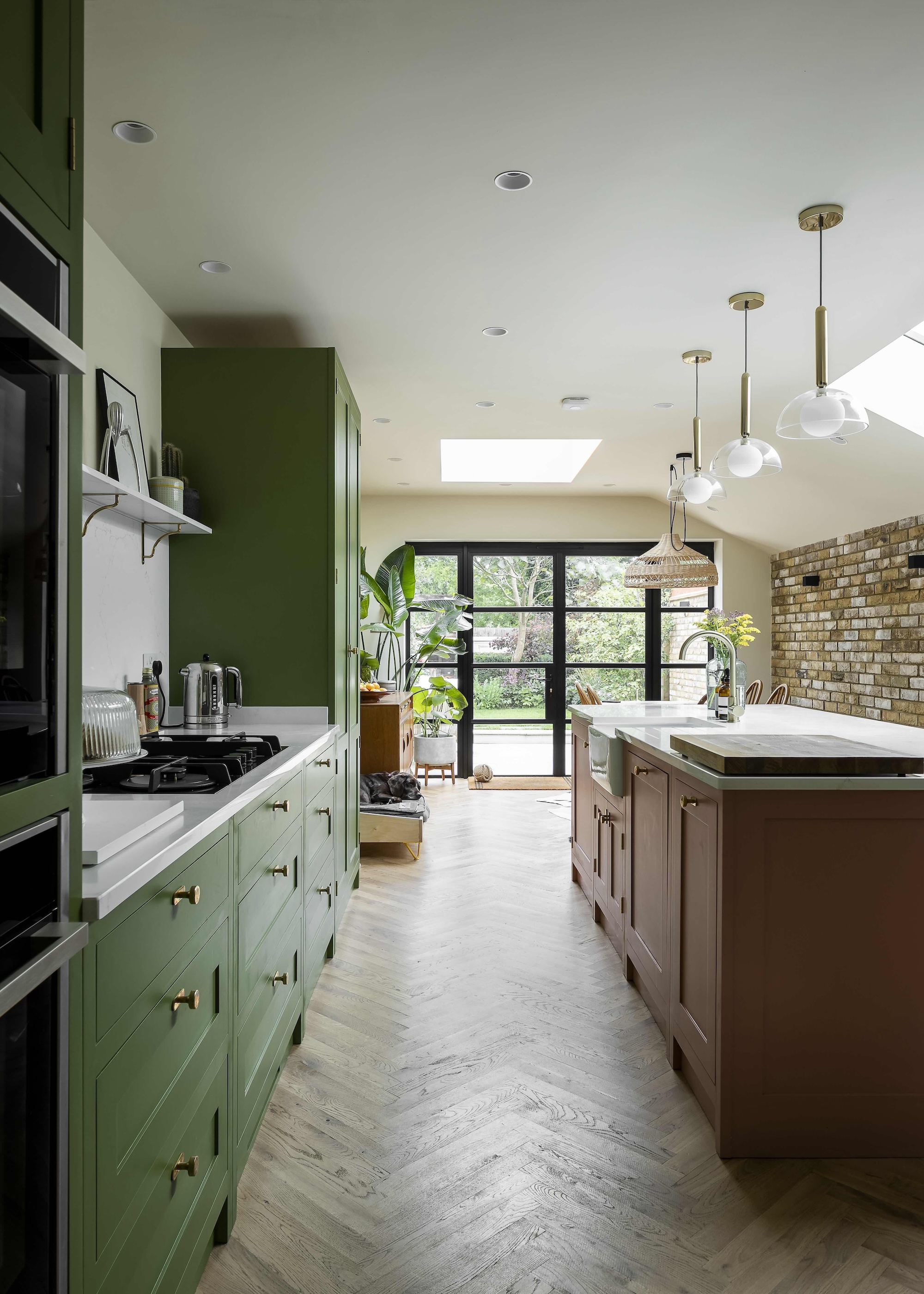
Do Instead: Create contrast by painting your kitchen island in a different color.
Kitchen islands that match the main cabinetry in the exact same color can feel like an afterthought and make the kitchen feel flat, predictable, and uninspired – and it’s something the experts are steering clear of.
“A kitchen island is a multifunctional piece that should provide both extra work space and storage while also enhancing your design scheme,” explains Al Bruce, founder of Olive & Barr. “We are seeing homeowners move away from islands that exactly match their kitchen cabinetry and look to incorporate a kitchen island that adds contrast, character, and flexibility.”
Designers recommend introducing mixed materials or a different paint shade to create a kitchen with layers and contrast.
“Use the island to add contrast, whether that’s with a different worktop, a tonal color shift, or a new texture like timber or concrete,” adds Simon Ribchester. “It anchors the space and makes it feel considered. It also helps the island tie in with more elements around the house, bringing everything together nicely.”

Al is founder of UK Shaker kitchen company Olive & Barr. He studied as a cabinetmaker 25 years ago and has a natural flair for design and a deep passion for the handmade kitchen industry.
8. Fitted Peninsulas
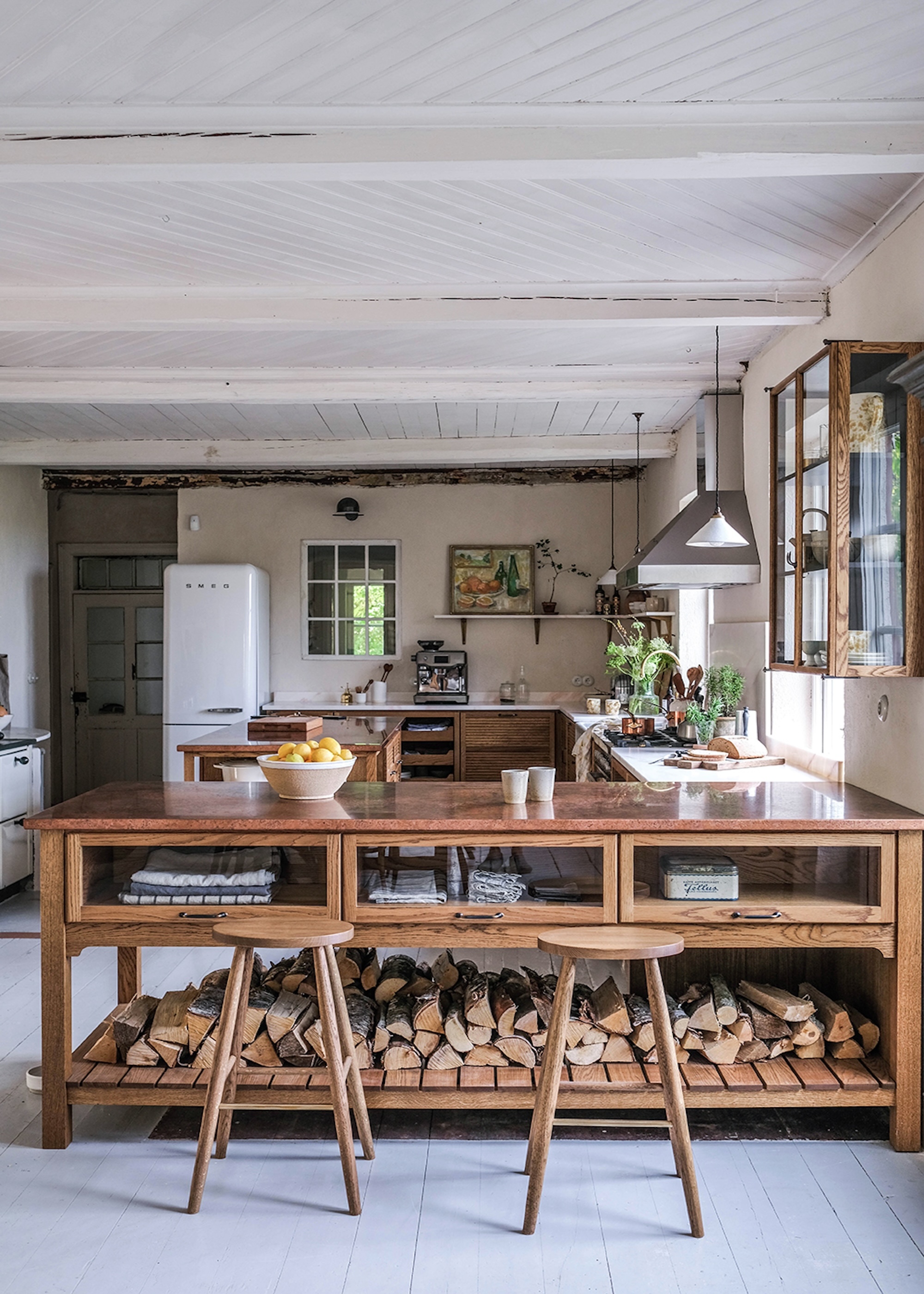
Do Instead: Go for an unfitted kitchen peninsula.
If you haven’t got space for a kitchen island, a peninsula or breakfast bar is often the next best solution. But don’t fall into the trend trap of installing a peninsula that looks too fitted and uniform.
“A peninsula can look a little dated if you’re not careful to create other types of kitchen storage, such as ceiling and hanging rails, open shelves, and open slatted storage. This creates a more interesting look than just cupboards,” says Helen Parker, creative director at Devol. “Instead, we would use a prep table or an open slatted island butted up to a wall if there’s lack of space for a freestanding central piece of furniture.”
The result is a more freestanding look packed with personality.

Helen is creative director at Devol Kitchens. She has been with the company for over 20 years and is responsible for Devol’s style and one-of-a-kind showrooms. Helen also sources antiques and designs new pieces of furniture and accessories.
9. Glossy Finishes
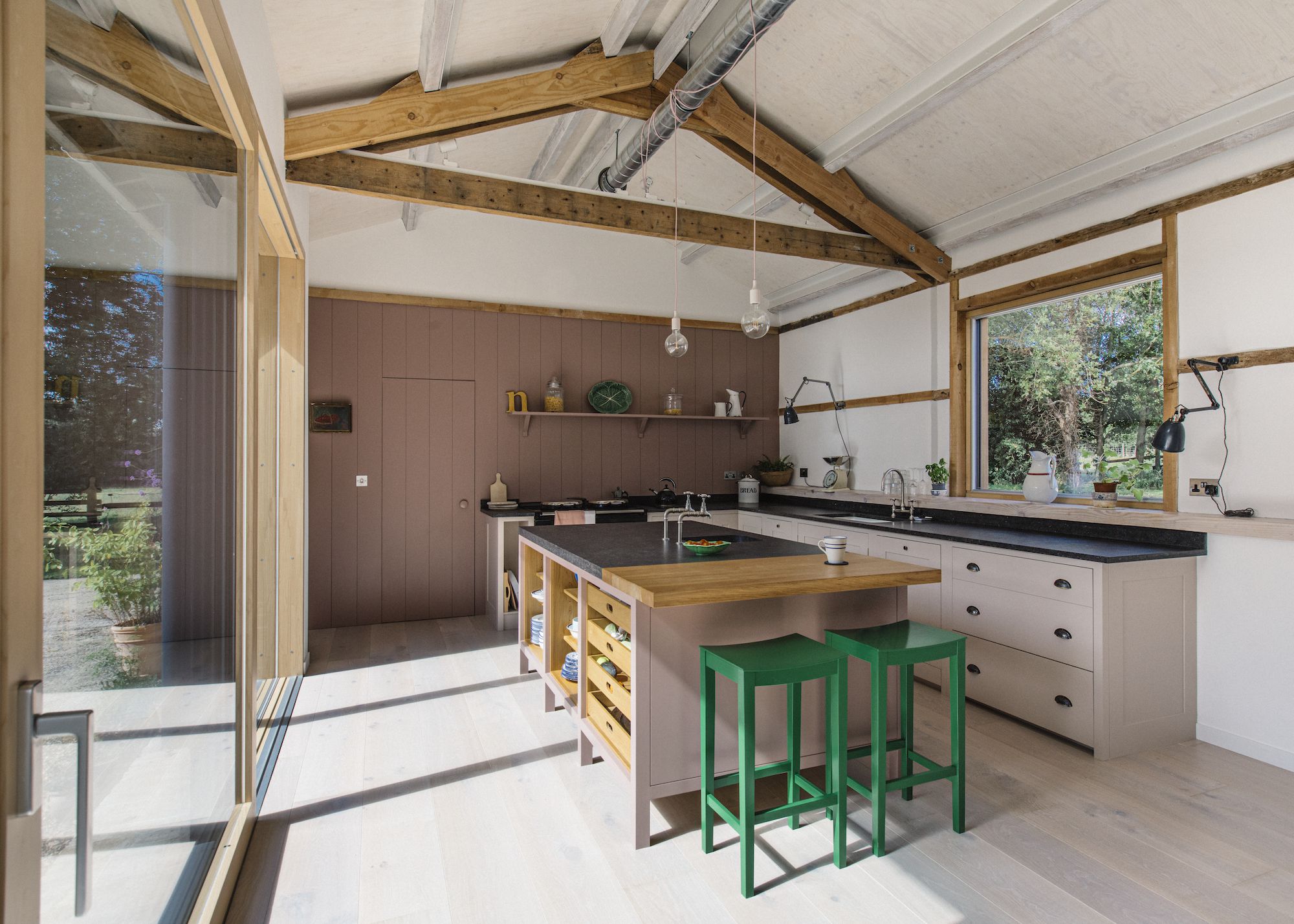
Do Instead: Swap shiny surfaces for tactile matt finishes.
High-gloss, shiny cabinetry should be avoided for the kitchen island. Instead, the design gurus are opting for matt or soft satin finishes that are tactile and timeless.
“Mirror-shiny cabinetry was everywhere over a decade ago, but it tends to show fingerprints, marks, and scratches — and can look overly clinical,” says Simon. “Instead, choose hand-painted wood, rich laminate textures, or even brushed metals for a more current, lived-in feel.”
10. Identical Handles and Hardware
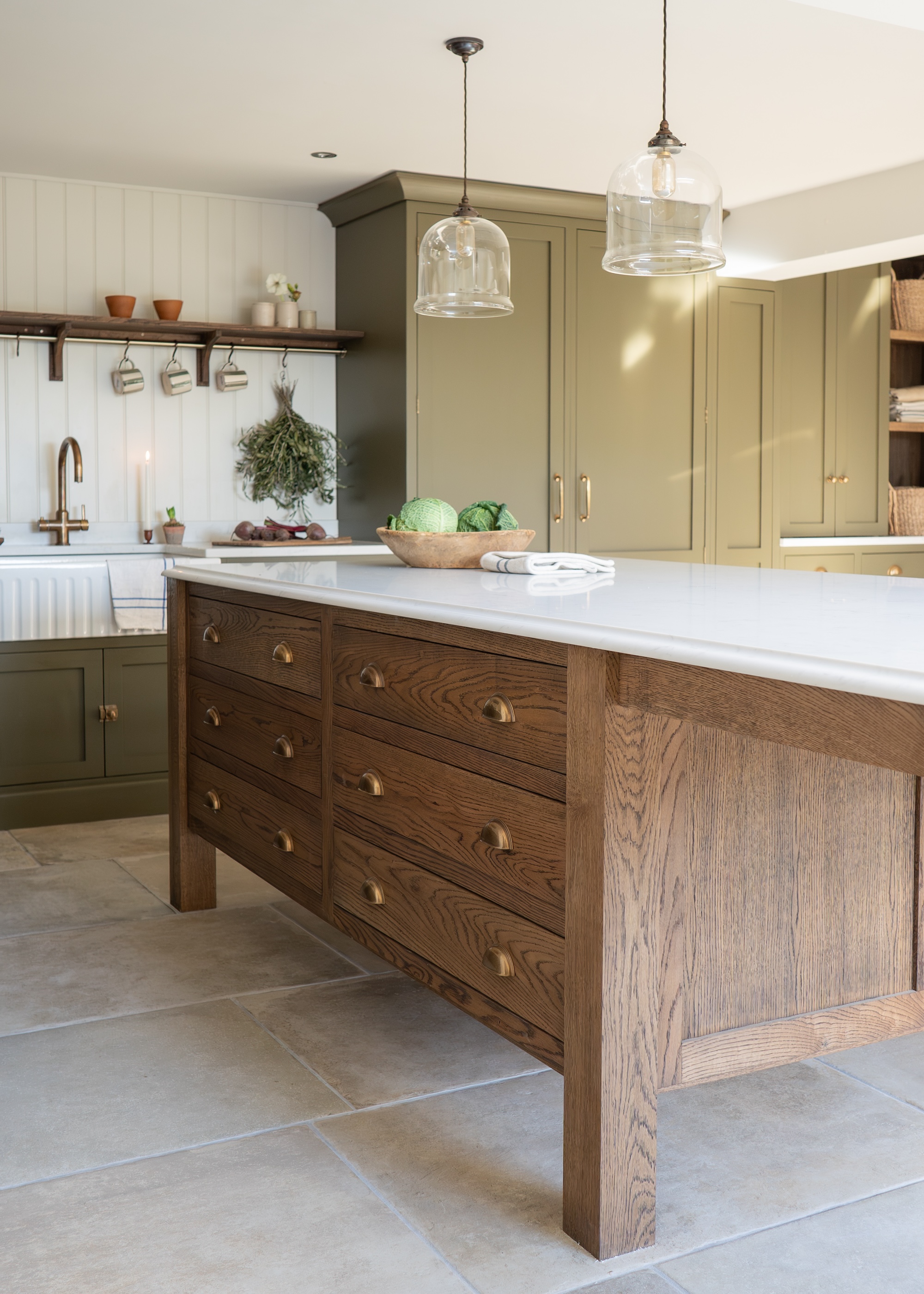
Do Instead: Don’t be afraid to choose different handles for your island.
Mix and match kitchen handles and hardware are the way forward for a layered, considered look. So stay away from only cups or only knobs that can look overly stylized and uninteresting.
“As a design trend for kitchen islands, we’re seeing a movement away from the idea that hardware should be uniform across the whole kitchen, particularly when it comes to the island,” says Gareth Hull, design lead at Hendel & Hendel. “That sense of repetition used to be a go-to for cohesion, but homeowners want to personalize. More and more, we’re working with designers and clients who want the island to feel distinct, not just in terms of cabinetry or material, but in the hardware too.”
Kitchen Island Accessories
FAQs
Are Kitchen Island Outdated?
Kitchen islands are unlikely to ever go out of fashion. In fact, islands often top a homeowner’s wish list when planning a new kitchen. And it’s easy to see why. Well-designed kitchen islands can bump up storage opportunities and create extra work surfaces, as well as providing a spot for eating and drinking. The best kitchen islands also create an effortless sense of flow in your cookspace.
However, that doesn’t mean there aren’t design rules to follow if you want a kitchen island with staying power, or that people aren't replacing kitchen islands with alternative ideas.
Kitchen islands are normally pretty timeless, but a couple of things will definitely date them. That’s why it’s important to get advice from kitchen experts and interior designers who can help futureproof your island and create a centerpiece that you’ll love not just today but for years to come.
Of course, style is a personal choice, but the best kitchen islands will elevate your kitchen in every way, both the practical elements and your preferred design tempo. The result is a kitchen island that suits your room and your lifestyle and is a joy to use every single day.

